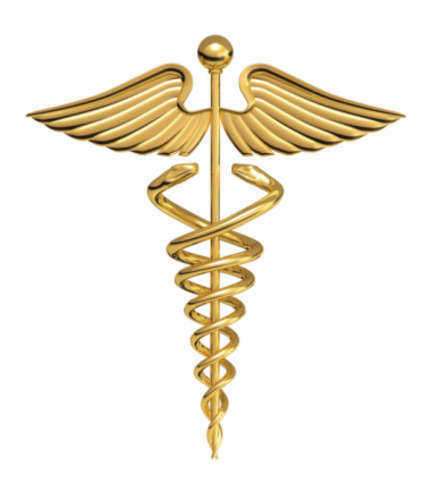
Clinical negligence occurs when a healthcare provider fails to provide an acceptable standard of care, resulting in harm or injury to a patient. If you have been the victim of clinical negligence, you may be entitled to compensation for your damages.
In this article, we’ll explore the process of clinical negligence compensation, including how compensation is calculated, the different types of damages and the legal process for obtaining compensation.
Compensation Calculation
Compensation for clinical negligence is typically awarded based on the losses and expenses incurred by the victim as a result of the negligent act. These losses may include medical expenses, lost wages, loss of future earnings, pain and suffering, and emotional distress.
To calculate compensation, the court will consider a variety of factors, including the severity of the injury, the impact it has had on the victim’s life, and the potential for future medical expenses or lost earnings. In addition to these factors, the court may also take into account any financial losses the victim has incurred as a result of the negligence, such as costs associated with adaptations to their home or vehicle.
Types of Damages
There are several types of damages that may be awarded in a clinical negligence case. These include:
1. Special Damages: This refers to financial losses incurred by the victim as a direct result of the negligence. This can include medical expenses, travel expenses, loss of earnings, and any other expenses related to the injury.
2. General Damages: These damages are awarded for non-financial losses such as pain and suffering, loss of enjoyment of life, and psychological distress.
3. Future Losses: Victims may also be entitled to compensation for any future losses that are anticipated as a result of the injury. This can include future medical expenses and loss of future earnings, if applicable.
Legal Process for Obtaining Compensation
The process of obtaining clinical negligence compensation typically involves the following steps:
1. Investigation: The victim’s lawyer will investigate the case to determine if there is a viable claim. This will involve gathering evidence, obtaining medical records, and speaking with witnesses.
2. Negotiation: Once the case has been investigated, the victim’s lawyer may attempt to negotiate a settlement with the negligent party or their insurance company.
3. Litigation: If a settlement cannot be reached, the case may go to court. This will involve presenting evidence to the court to prove that the healthcare provider was negligent and that the victim suffered as a result.
Conclusion
Clinical negligence compensation can help victims recover damages and losses incurred as a result of negligence by healthcare providers. By understanding how compensation is calculated, the types of damages that may be awarded, and the legal process for obtaining compensation, victims can make informed decisions about pursuing legal action. It’s crucial to seek the assistance of an experienced clinical negligence lawyer to increase your chances of success and obtain the compensation you deserve.
WHAT KIND OF COMPENSATION CAN I EXPECT IN A MEDICAL NEGLIGENCE ACTION?
As in any case involving a civil tort the plaintiff’s primary concern is economic recovery for damages incurred. This is certainly true with medical negligence. Depending on the extent and severity of the injury incurred due to a medical professional’s negligence the compensation may be high. The forms of medical negligence compensation take two (2) forms. These are Economic damages and Non-Economic damages.
ECONOMIC DAMAGES
Economic damages can take the form of out-of-pocket expenses such as hospital bills, medication expenses, nursing care or other costs associated with convalescence required as a result of the clinical negligence. Economic damages can also take the form of Lost Wages associated with the clinical negligence.
These damages include the money the plaintiff would have made had it not been for the clinical negligence. In evaluating the extent of damages due to lost wages it is important to show all evidence of, not only present lost wages, but also future lost wages that the plaintiff would have made if not for the injury.
For example, if Peggy is injured at age 14 because of medical malpractice it would be prudent to put on evidence that her grades, natural intelligence, honors, etc. would show that it was very likely that she would have gone to an Ivy league school and eventually received a high salary as an accountant. Although this analysis is far from a concrete showing of future gain, it is in the best interest of the plaintiff to put forth all possible information that may lead a jury to rule that future wages would have been exceptional.
NON-ECONOMIC DAMAGES
Non-economic damages refer to those damages that are not out-of-pocket expenses. These types of medical negligence compensation include physical pain and suffering and emotional pain and suffering. Physical pain and suffering may include suffering due to the inability to be mobile due to clinical negligence or constant pain. Emotional pain and suffering could include the emotional strain due to a shorter life expectancy resulting from clinical negligence or clinical depression resulting from that negligence.
ARE THERE LIMITS ON THE AMOUNT THAT CAN BE RECOVERED?
You have probably hear of the term “tort reform” in the past. Basically what this term refers to is the ongoing dispute between medical professionals, insurance companies and attorneys over a cap that a plaintiff in a clinical negligence action can recover in non-economic damages. It has often occurred that when a particularly damaging result has occurred from clinical negligence a jury will award an astronomical damage award to a plaintiff.
This has led to increased insurance premiums that medical professionals have been required to pay. Some states have enacted laws which require such a cap. In Florida, for example, The Medical Injury Compensation Reform Act has limited recovery for non-economic damages to $250,000. In 2003 George W. Bush endorsed legislation that would put a national cap of $250,000 on non-economic damages associated with clinical negligence. Although it is not law it is very common for a judge to take a jury award that he/she deems excessive and reduce the amount to a figure that is more suitable.























